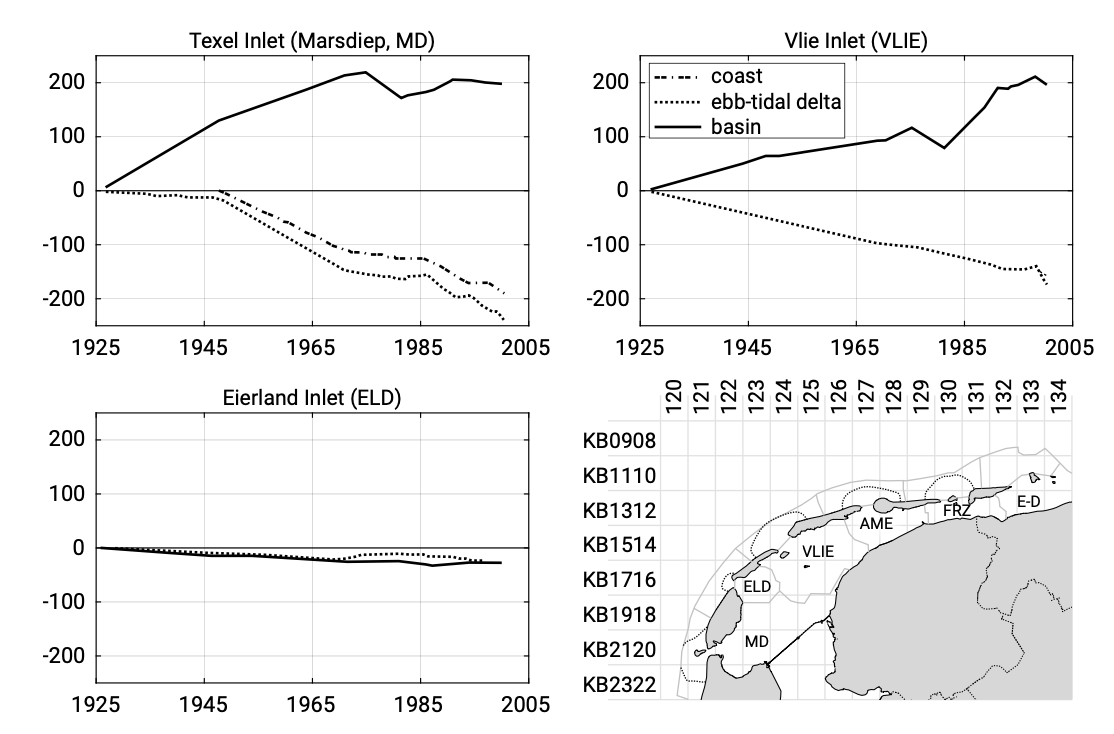15.3.1: E.3.1- Closure of Zuiderzee
- Page ID
- 16464
The Afsluitdijk, a 30 km dam separating the former Zuiderzee from the Wadden Sea, was finished in 1932. After the closure part of the Zuiderzee is reclaimed and the remaining part became a freshwater lake, the IJsselmeer.

Figure E.2 shows schematically how the closure dam influences the vertical and ho- rizontal tide. Before the closure the basin was relatively long compared to the tidal wavelength. There was a place in the system where the tidal flow before the closure was minimal. The closure dam is located just seawards of this place. As the tidal range in the remaining basin became higher, the tidal prisms at the inlets (Texel and Vlie) became even slightly larger than before the closure.

Although the closure has not caused significant changes of the total tidal prisms of the basins it has induced morphological changes inside and outside the basins, especially the two large basins: Texel or Marsdiep and Vlie. Figure E.3 shows the sediment budget of the three inlet systems. Note that the ebb-tidal delta is also included in the area indicated by ‘coast’. Inside the two large (remaining) basins Texel and Vlie sedimentation has taken place since the closure. The sedimentation rates are much higher than necessary for keeping pace with the relative sea-level rise. See also the total changes in the period 1927-2000 given in Table E.1. Outside the basins, i.e. the coastal areas erosion occurs and the total amount is more or less the same as the sedimentation inside the basins (Elias, 2006). Apparently the closure has caused sediment deficits in the basins, which has driven sediment import from the coastal area into the basins.
Table E.1: Total changes in sediment budget in the period 1927-2000 (ebb-tidal delta forms part of coast).

The erosion of the coast area has caused retreat of the coastline, especially around the Texel Inlet. Since 1990 the Dutch coastline is maintained by sand nourishment. The coast around the Texel Inlet is an area requiring the largest volume of sand nourishment. The morphological development within the basins has also caused movement of the tidal divide, i.e. more or less the boundaries between the basins, between Texel and Vlie. The movement is eastwards, enlarging the Texel basin at the cost of the Vlie basin. In the closed part of the basin, i.e. IJsselmeer, mud supplied by the IJssel River flowing into the basin accumulates. Locally this has resulted in a polluted lake bottom.


